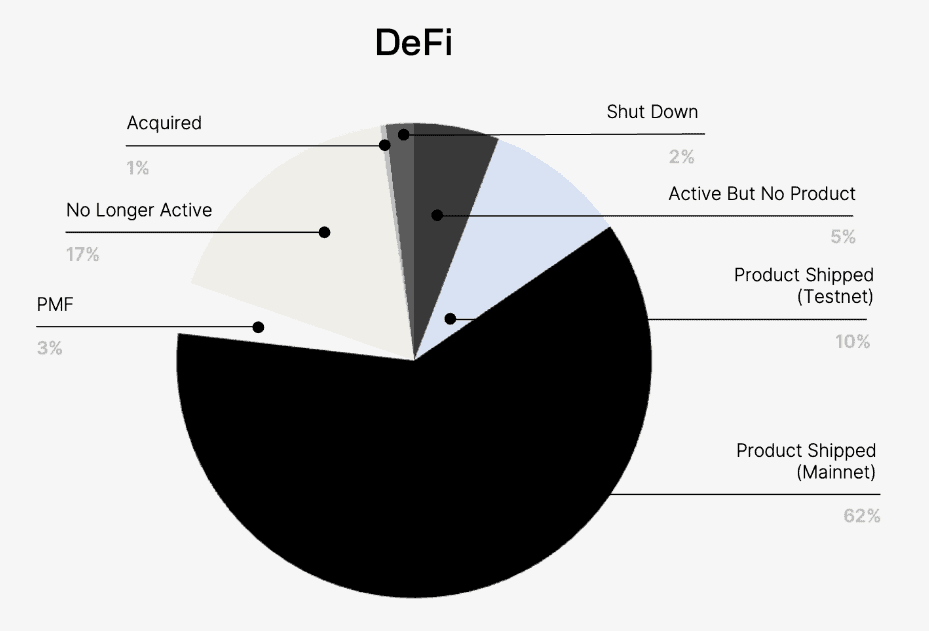The year 2021 marked a remarkable period for the DeFi market, witnessing a surge in capital inflows and heightened user interest. From a modest $15.3 billion at the beginning of the year, the total value locked (TVL) on all DeFi protocols skyrocketed to an impressive $175 billion by November, showcasing the industry’s exponential growth.

Simultaneously, the broader crypto market was enjoying its best year to date. Bitcoin’s double peaks and numerous large and mid-cap assets reaching all-time highs contributed to the hype and excitement. Amid this euphoria, a staggering $2.6 billion was invested in approximately 800 crypto companies throughout the year. This article seeks to analyze the performance and fate of these organizations.
However, despite the overall success, DeFi projects have faced their share of challenges. A recent report by crypto venture funding firm Lattice revealed concerning statistics. While one-third of the funded companies initiated follow-on rounds of venture funding, 20% of projects were forced to shut down or halt their development altogether. The report highlighted that 70% of projects successfully shipped a product to the mainnet or its equivalent, with almost half of them launching their tokens.
Notably, DeFi projects specifically struggled to raise follow-on rounds, with less than 30% of them securing additional capital. The report emphasized a critical issue, stating,
“Less than 75% of DeFi projects delivered a product to mainnet.”
The DeFi and Consumer/Web3 sectors received the most funding in 2021. However, they now face difficulties in achieving Product to Market Fit (PMF), a crucial concept for startups. PMF indicates whether a product or service fulfills a market need and is validated through organic growth.

The volatile nature of the crypto market can rapidly change the fate of even once-promising projects, resembling “building a house on quicksand,” as described in the report. Presently, the DeFi PMF stands at a concerning 3%, while other sectors, including CeFi, Consumer/Web3, and Infrastructure, boast higher rates in the range of 4% to 11%.
DeFi PMF on a Slippery Slope: Challenges Ahead
One interesting observation from the report is that 2021 may have been a delayed year for funding DeFi projects. The top 10 DeFi tokens by market cap were all initiated in 2019 or earlier, raising questions about the timeliness of investment decisions.
Despite projects meeting industry averages for shipping products, DeFi PMF remains on a slippery slope. With a depressed VC market, raising follow-on rounds could prove demanding for projects that haven’t already done so. Additionally, certain narratives are still “hot,” but they carry the risk of burning investors’ fingers. As early-stage fundraising becomes increasingly challenging and valuations fluctuate, the report warns that the shutdown percentage may rapidly increase.
However, there is hope on the horizon. The report concludes optimistically, stating that some teams may cut expenses to endure until better market conditions emerge. Researchers expect more teams to turn to bridge rounds in the latter half of 2023, potentially opening up new opportunities.
In conclusion, 2021 showcased the DeFi market’s incredible growth and potential. Still, the challenges faced by projects underscore the importance of careful evaluation and adaptation to market conditions. As the industry evolves, resilience and innovation will play key roles in determining which projects will thrive in the crypto landscape of the future.

